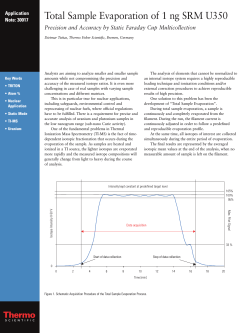
Unit 2 • For unit objectives see: Scope & Sequence
Unit 2 • For unit objectives see: Scope & Sequence Water Cycle Song • Directions: Click the link below for music to go along with the song. Click back to the lyrics and have fun. To stop music just click on the link again and then back to return slide show. http://kids.niehs.nih.gov/lyrics/mountain.htm • Water Cycle Song (to the tune of She'll Be Coming 'Round the Mountain) Water travels in a cycle, yes it does. Water travels in a cycle, yes it does. It goes up as evaporation, Forms clouds of condensation, Falls down as precipitation, Yes it does! Overview • Click on one or the other links below for an overview of the water cycle: http://www.epa.gov/ogwdw/kids/flash/flash_watercycle.html http://teacher.scholastic.com/activities/studyjams/water%5Fcycle/ • The earth has a limited amount of water. That water keeps going around and around and around and around and (well, you get the idea) in what we call the "Water Cycle". This cycle is made up of a few main parts: • Evaporation or (Transpiration) • Condensation • Precipitation • Accumulation or (Collection) • Ground Water • Saturation • Infiltration Evaporation • Evaporation is when the sun heats up water in rivers, lakes or the ocean and turns it into vapor or steam. The water vapor or steam leaves the river, lake or ocean and goes into the air. Demonstration of Evaporation Activity: Fog in a Bottle - Click on the 6 in the upper right hand corner once in the link below for instructions of this activity. http://imnh.isu.edu/digitalatlas/teach/grade.htm Condensation • Water vapor in the air gets cold and changes back into liquid, forming clouds. This is called condensation. • You can see this at home when you take a shower and the windows and mirrors in the bathroom fog up. You can also do this by breathing on a mirror. Demonstration of Condensation Activity: Create Condensation - Click on the 6 in the upper right hand corner once in the link below for instructions of this activity. http://imnh.isu.edu/digitalatlas/teach/grade.htm Precipitation • Precipitation occurs when so much water has condensed that the air cannot hold it anymore. The clouds get heavy and water falls back to the earth in the form of rain, hail, sleet or snow. Accumulation • When water falls back to earth as precipitation, it may fall back in the oceans, lakes or rivers or it may end up on land. When it ends up on land, it will either soak into the earth (infiltration) and becomes part of the “ground water” that plants and animals use to drink or it may run over the soil and collect in the oceans, lakes or rivers where the cycle starts all over again. Checking For Understanding Press either of the following links: http://www.e4s.org.uk/director/wtrgoes.htm http://epa.gov/climatechange/kids/quiz_water_cycle.html
© Copyright 2025





















